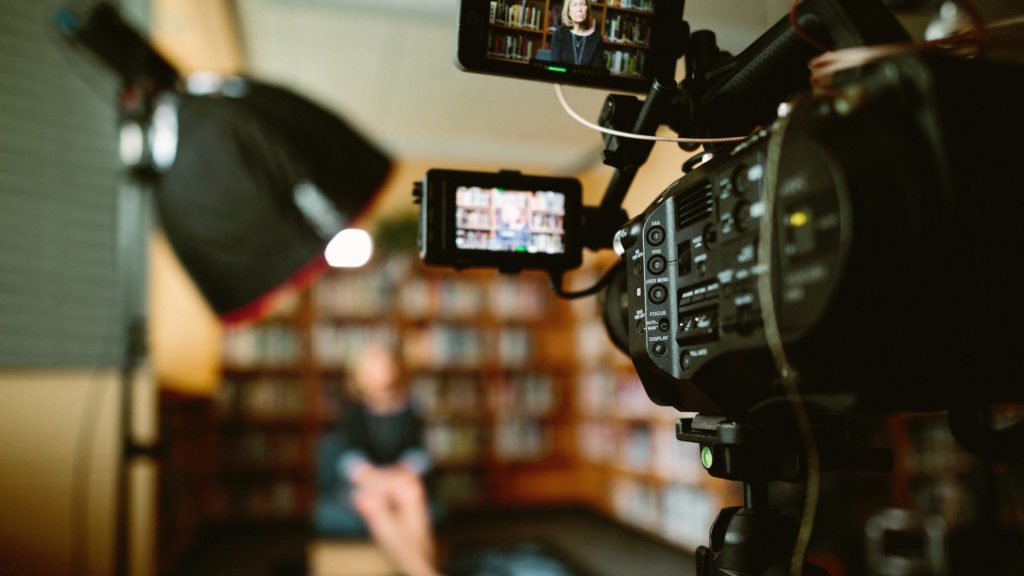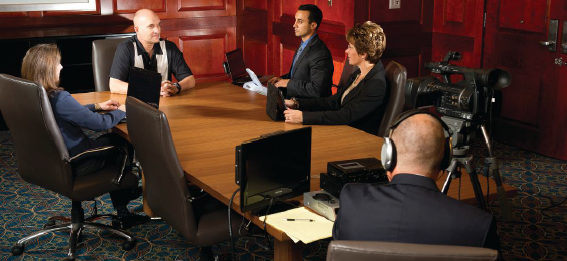The Duty of Lawful Videography in Depositions and Tests
Legal videography has actually arised as an essential device in both depositions and tests, giving a complex technique to documenting witness statements. As legal professionals significantly identify its worth, it triggers a deeper examination of just how these aesthetic records can influence juror perceptions and test end results.
Value of Legal Videography
Legal videography plays a pivotal duty in the paperwork and discussion of depositions and trials. This specific field combines technological abilities with legal expertise to produce a trustworthy record of proceedings that can dramatically influence case results. The visual aspect of lawful videography enhances the understanding of witness testament, enabling jurors and judges to observe not only the spoken words yet likewise the disposition, feelings, and body language of the witnesses.

The significance of legal videography extends beyond the courtroom; it also plays an important role in maintaining proof for future recommendation, whether for appeals or additional lawsuit. Thus, its combination right into the lawful procedure is vital for guaranteeing a reasonable and precise representation of the realities, eventually adding to the search of justice.

Refine of Legal Videography
While catching the nuances of depositions and tests, the procedure of lawful videography involves a number of important steps that ensure high-grade, accurate recordings. Originally, a specialist lawful videographer prepares by evaluating the case materials and comprehending the details demands of the deposition or test. This prep work consists of acquainting themselves with the individuals and the context, which assists in recording pertinent details.
On the day of the recording, the videographer establishes the required tools, which generally includes high-definition video cameras, microphones, and correct lighting. Making sure optimum angles and audio high quality is vital, as it straight influences the effectiveness of the recording. The videographer interacts with lawyers and participants to establish protocols, guaranteeing that everyone understands the recording process.
Throughout the deposition or test, the videographer thoroughly tapes the procedures, paying close interest to both verbal and non-verbal cues. legal videography. This consists of catching the behavior and reactions of witnesses and attorneys. After the session ends, the videographer might edit the footage for clearness and compliance with lawful requirements, creating a final product that precisely reflects the proceedings for future recommendation and use in lawful contexts
Advantages in Depositions
The incorporation of videography in depositions offers countless advantages that enhance the total process of collecting proof. One primary advantage is the capability to capture witness testaments with aesthetic and acoustic fidelity, giving a much more accurate depiction of the witness's behavior, tone, and body language. This multidimensional technique allows lawyers and juries to analyze trustworthiness better than standard written transcripts alone.
In addition, videographed depositions function as an effective tool for maintaining testimony. Must a witness become not available for test, their taped deposition can be played in court, ensuring that their proof continues to be easily accessible and pertinent. my sources This aspect dramatically decreases the threat of losing vital details that could influence case results.
Furthermore, making use of lawful videography advertises far better preparation for lawyers. Reviewing video clip footage permits legal groups to assess and fine-tune their approaches, identifying strengths and weaknesses in their situations. This primary benefit can lead to more compelling discussions in court.
Finally, videography enhances the general expertise of the deposition procedure, instilling self-confidence in clients regarding the thoroughness of their lawful depiction. By leveraging modern technology, lawful specialists can considerably improve the efficiency of depositions.
Influence on Trials
In many trials, the integration of videography can considerably affect the presentation of proof and the court's understanding. Legal videography catches witness statements and important proof in Check Out Your URL a dynamic style, permitting jurors to engage with the material on numerous degrees. This aesthetic part boosts the narration element of a trial, offering context and emotional vibration that typical text-based proof might lack.
In addition, video clip recordings can serve as powerful tools for impeachment throughout cross-examination. When discrepancies arise in between a witness's previous statements and their courtroom testament, video clip evidence supplies an objective referral that can guide jurors' opinions. This immediacy and clarity can reinforce the trustworthiness of a celebration's narrative while all at once threatening opposing disagreements.
Additionally, making use of videography can assist streamline intricate details, making it much more accessible to jurors who may have a hard time to grasp detailed details offered exclusively through spoken testimony. By incorporating visuals with acoustic information, legal videography can boost retention and understanding, inevitably influencing the jury's decision-making procedure. The influence of videography in trials extends beyond plain appearances; it plays an important duty in shaping the legal landscape and end results.
Future Trends in Legal Videography
As we look towards the future of legal videography, a number of arising patterns promise to improve its function within the court. One substantial pattern is the assimilation of expert system (AI) in video clip analysis and modifying - legal videography. AI can enhance the procedure of determining key moments in videotaped depositions, allowing attorneys to swiftly access relevant content, consequently look at here boosting performance in case prep work
Additionally, the increase of digital fact (VR) and boosted truth (AR) technologies is expected to change how jurors experience evidence. By immersing jurors in a simulated environment, these innovations can supply a more extensive understanding of complex situations, causing more enlightened deliberations.

Moreover, the enhancing demand for remote depositions, accelerated by the COVID-19 pandemic, will likely continue. Lawful videographers will certainly need to adapt to brand-new software application and systems to ensure top quality recordings in virtual settings.
Last but not least, the expanding focus on data safety and security will necessitate more stringent methods for keeping and sharing video clip proof. As the legal landscape evolves, lawful videographers have to remain abreast of these patterns to maintain their importance and performance in the judicial procedure.

Conclusion
In summary, lawful videography serves a critical feature in the judicial procedure, boosting the honesty of depositions and tests. By catching the subtleties of witness statements, this tool not only protects essential proof yet likewise help in offering information properly to jurors. The significance of aesthetic documentation in examining credibility and assisting in interrogation can not be overstated. As innovation remains to develop, legal videography is positioned to further transform its duty within the lawful landscape.
Comments on “Dependable Legal Videography Solutions.”